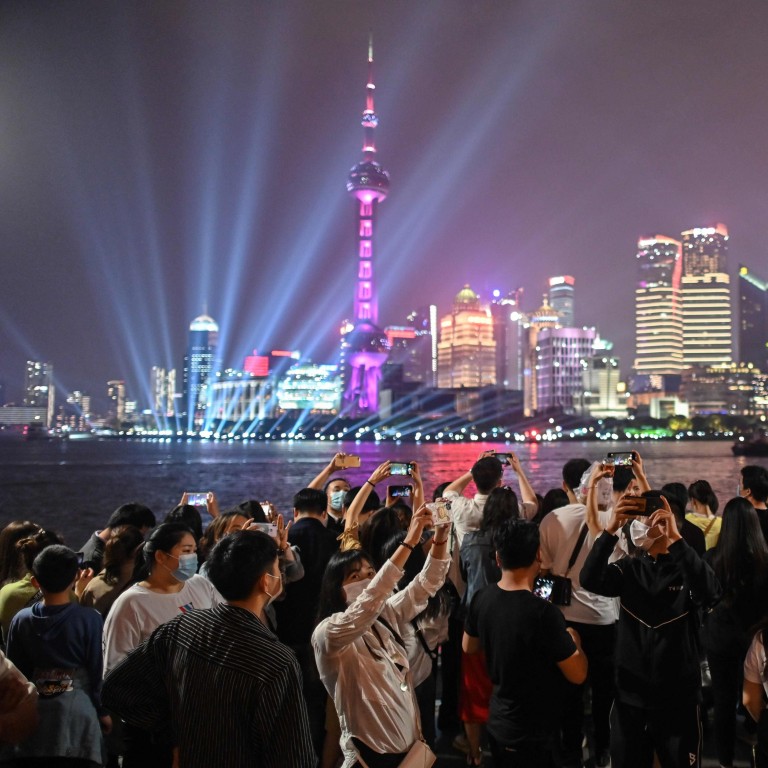
Chinese domestic tourism gets a Labour Day holiday boost as ‘revenge travellers’ throw off the shackles of coronavirus lockdown
- Domestic tourism revenue almost quadrupled from April’s Ching Ming Festival as people who had been cooped up at home took a much-needed trip
- This year’s Labour Day travellers stayed closer to home amid travel restrictions, shunning traditional favourites like Kunming
Tourism and travel spending in China started to rebound during the extended Labour Day holiday, which ends today, as the country emerged from months of lockdown.
Although far lower than a year ago, domestic tourism revenue almost quadrupled from April’s Ching Ming Festival as people who had been cooped up at home for weeks leapt at the opportunity to get away for a few days.
The five-day holiday period had been anticipated as a barometer of consumer confidence, with the authorities pinning their hopes on the festivities to unleash people’s purchasing power and help reignite an economy in the doldrums.
With quarantine rules and travel restrictions still in place, most of the so-called revenge tourists stuck much closer to home than in previous years. Cities like Shenzhen and Nanjing emerged as popular destinations, while more traditional tourist draws like Kunming in Yunnan province – a long journey for most domestic travellers – dropped out of favour, and foreign trips evaporated altogether.
China’s hotels pull out all the stops to tempt Labour Day travellers
“Tourism is starting to gradually recover from a very low level,” said Yu Zhanfu, a partner at the consultancy Roland Berger. “The travel mood is stronger than it was during Ching Ming Festival, although it’s a rebound rather than a complete recovery as the pandemic effect has not disappeared yet.”
In the first four days of the five-day holiday, domestic tourism revenue averaged 10.81 billion yuan (US$1.53 billion) per day, far higher than the 2.75 billion yuan daily average during the Ching Ming Festival in April, according to the Ministry of Culture and Tourism. It was still a far cry from the daily average of 29.42 billion yuan billion yuan during last year’s Labour Day festivities.
The holiday, which this year was extended to five days for the first time in 12 years, came as the Chinese government vowed to boost domestic consumption, particularly tourism and retail sales, to support the battered economy. First quarter gross domestic product dropped 6.8 per cent as economic activity ground to a halt amid efforts to contain the deadly Covid-19 outbreak.
This year, Labour Day travellers tended to visit outdoor attractions within their own cities and provinces, according to data from online travel firm Fliggy, mapping app Amap, and Baidu Map.
Many chose to drive to nearby attractions, a trend reflected in a dramatic fall in passengers using public transport. Journeys by trains, bus, ship and aeroplane dropped by more than half this year, according to the Ministry of Transport.
Lists of the most popular destinations changed too, as people stayed closer to home. Shenzhen, Nanjing and Changsha made it into the top 10 Labour Day destinations, according to data from travel service provider Trip.com. Slightly more remote locations such as Kunming in southwestern Yunnan province, Guiyang in southwestern Guizhou province, Xi’an in central Shaanxi province, were pushed off the list this year.
China’s top developer in biggest ever live-streaming home sales
Trips to other countries and regions all but evaporated as many foreign governments grapple with rising infections and travel restrictions remain in place. Hong Kong saw the number of mainland Chinese tourists plummet 99 per cent to only 361 from May 1 to May 3, compared with around 750,000 last year.
Compared with the three-day Ching Ming Festival where various sites saw excessive crowds, the Labour Day holiday was more orderly because of strict crowd controls imposed by the government. Only Mount Tai in eastern China’s Shandong province was packed, when 29,000 people flocked to the site, triggering management to pause ticket sales at 4pm on May 2, and to bar tourists from certain parts of the site.
Many observers had predicted a wave of so-called revenge spending as people free from lockdown rushed out on shopping sprees.
The Labour Day holiday marked an uptick in retail spending, though not as dramatic as some had forecast.
“Consumption in brick and mortar shops is recovering faster than during Ching Ming Festival as China’s containment of the virus has further improved,” said Fu Yifu, a senior researcher at the Suning Institute of Finance. “Although it has not reached the level of ‘revenge consumption’, it is getting better.”
In recent weeks, Chinese cities have been handing out shopping coupons to boost retail during the holiday season. Shanghai launched a two-month campaign to stimulate local consumption, cooperating with merchants to give out coupons worth around 20 billion yuan as of Monday. Beijing started on May 2 to hand out coupons for cultural spending worth 50 million yuan.
“Consumption coupons and merchants giving discounts to some extent are effective as a lever to stimulate people to [buy more],” said Fu, “People are more price-sensitive during the pandemic when their income grows slowly or even drops.”

